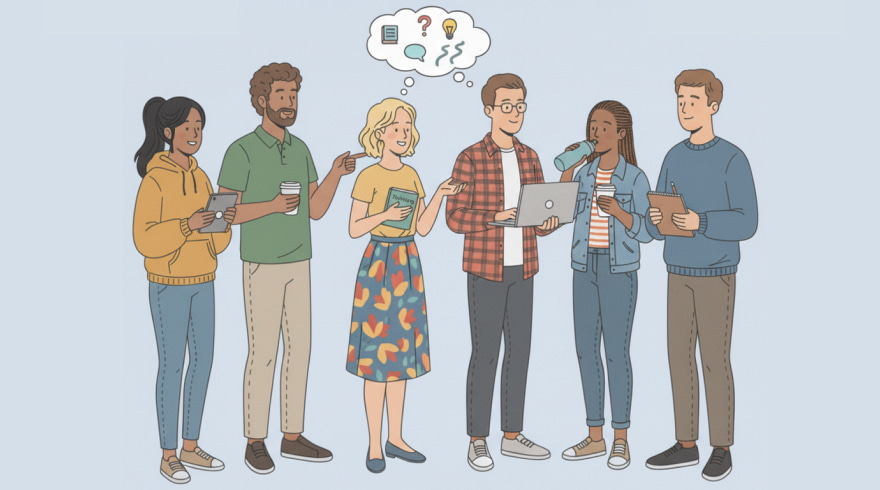Extrovert Personality: A Deep Guide to Strengths, Skills, and Real-World Advantages
- 10 November 2025

The Social Engine Behind Outgoing Temperaments
People who thrive in conversation, feel energized by teamwork, and seek lively environments often get tagged as “the talkative ones,” yet the reality is both richer and more strategic. Extroversion is a pattern of attention and motivation that leans outward, drawing vitality from interaction, novelty, and rapid feedback. This orientation can power creative brainstorming, persuasive communication, and resilient momentum across personal and professional domains.
In everyday language we debate labels, but the science emphasizes sustained engagement with people and situations. In practical terms, many readers ask what is an extroverted personality, and how might it express itself in different settings. Researchers describe this constellation as high sociability, assertiveness, and positive affect combined with a bias for action and collaboration.
At work, visibility and quick rapport foster opportunity, and social curiosity fuels networks that compound over time. At its best, an extrovert personality channels collective energy into decisive movement while keeping morale buoyant. The same pattern can also support well-being through rich relationships, frequent positive experiences, and a sense of belonging that buffers stress.
- Prefers fast feedback loops and dynamic dialogue
- Builds trust through presence, warmth, and responsiveness
- Translates group ideas into executable steps
- Recharges through shared experiences and activity
Benefits, Payoffs, and Everyday Wins of Outgoing Dispositions
Extroverted strengths become especially visible where coordination, visibility, and momentum matter. Sales calls feel natural when enthusiasm meets empathy. Cross-functional projects progress faster when someone animates meetings, surfaces obstacles early, and invites fuller participation. Because social cognition stays active, these individuals tend to detect subtle cues, respond quickly, and keep conversations moving toward outcomes.
Across roles that demand influence, an extrovert personality type can accelerate onboarding, shorten trust-building cycles, and close collaboration gaps. Teams often benefit when an energetic colleague synthesizes perspectives aloud, reframes friction constructively, and spotlights small wins that motivate further progress.
In broader contexts, many workplaces rely on extroverted personality types to catalyze culture, amplify communication, and maintain a sense of shared purpose. Community organizations, events, and classrooms similarly flourish when someone orchestrates participation, keeps agendas lively, and welcomes newcomers into the fold.
- Influence: Natural comfort with outreach and rapport
- Innovation: Idea generation sparked by social exchange
- Leadership: Visible, energizing presence during change
- Resilience: Optimistic framing that sustains motivation
Communication, Leadership, and Contextual Tactics
Communication prowess is often the signature advantage: clear messaging, confident tone, and agile adaptation to audience needs. Leadership grows from this base through facilitation, consensus-building, and public advocacy. Yet skillful extroverts also cultivate listening, pausing, and calibration, ensuring that airtime becomes a resource for inclusion rather than dominance.
When assessing work environments, nuanced distinctions help channel energy strategically because different demands reward distinct behaviors. In complex organizations, people-centered influence scales when visible routines and crisp follow-through support reliability. Within this landscape, a discussion of personality types extrovert benefits from practical comparisons that map strengths to situations.
| Context | Strength Expressed | Actionable Tip |
|---|---|---|
| Team Kickoff | Momentum-building and morale setting | Define roles early and summarize decisions aloud |
| Client Presentation | Storytelling and confident delivery | Pause for questions at planned checkpoints |
| Cross-Functional Handoff | Bridging silos through quick rapport | Document agreements to anchor accountability |
| Brainstorm Workshop | High-energy ideation and facilitation | Rotate voices to surface quieter insights |
Comparative frameworks clarify collaboration zones by highlighting introvert and extrovert personality traits that complement one another. Skilled partners alternate between expansive discussion and careful contemplation, creating a rhythm that captures diverse ideas while maintaining velocity. With deliberate design, meetings become engines of alignment rather than arenas of overload.
- Schedule reflection windows after high-energy sessions
- Use visual agendas to keep focus shared and stable
- Wrap with concrete next steps and owners
Balance, Energy Management, and the Spectrum of Social Drive
Extraversion lives on a continuum, and many people blend outward enthusiasm with periodic solitude. Energy management therefore becomes an executive function: timing demanding conversations, protecting recovery, and weaving in quiet work that replenishes attention. The goal is not nonstop interaction but sustainable cadence aligned with values and outcomes.
Some individuals recognize themselves as an introverted extrovert personality type, enjoying animated dialogue yet craving decompression after intense social bursts. By scheduling brief resets between meetings, these professionals preserve vitality for the conversations that matter most.
Others resonate with the idea of an introverted extrovert personality, preferring depth over small talk while still finding joy in purposeful gatherings. In practice, that might mean fewer but richer events, intimate salons instead of loud mixers, and deliberate preparation to make appearances count.
A related pattern involves an introvert extrovert personality, where context determines whether social energy rises or retreats. People in this blend often flourish when they can choose formats, one-to-ones, small groups, or larger stages, that fit the task and protect stamina across the week.
- Plan micro-recovery blocks after high-stakes interactions
- Batch outreach to harness momentum without burnout
- Favor meeting designs that invite equitable participation
Self-Assessment, Tests, and Data-Driven Insight
Reflection becomes sharper when paired with structured assessment. Scores alone never tell the whole story, but reliable instruments offer language for preferences, tendencies, and situational shifts. The best approach is longitudinal: revisit results after new roles, life changes, or training to detect how habits evolve.
A comprehensive framework may include a personality test for introvert extrovert that benchmarks social energy, assertiveness, and stimulation tolerance across multiple scales. Insight strengthens when results are paired with journaled observations from real workdays.
Many organizations also use a brief personality test introvert extrovert to align teaming, feedback cadence, and meeting formats. When teams share patterns transparently, friction drops and collaboration becomes more fluid.
For fast orientation, a playful personality quiz introvert extrovert can surface starting hypotheses that you later validate through experience. Depth emerges when informal scores are cross-checked with 360 feedback, calendar analysis, and energy mapping over a month.
- Combine quantitative scores with narrative reflections
- Translate insights into calendar rules and meeting norms
- Reassess quarterly to track growth and adjust tactics
FAQ: Clear Answers to Common Questions
Are extroverts always the most talkative person in the room?
Not necessarily. Many outgoing people prioritize listening so they can tailor messages precisely, and seasoned leaders often modulate their speaking time to elevate quieter contributors.
Do extroverts struggle with remote or asynchronous work?
They can thrive when channels allow fast feedback and visible collaboration, especially by using short video updates, interactive documents, and scheduled touchpoints to keep momentum steady.
How can a highly social professional avoid burnout?
Energy budgeting helps: stack meetings into clusters, add brief decompression buffers, and use focus blocks for solo tasks that replenish concentration and creativity.
What leadership styles align with an outgoing orientation?
Facilitative, coaching, and transformational styles fit well because they rely on dialogue, shared vision, and real-time course correction grounded in stakeholder input.
Which careers frequently reward outward-facing strengths?
Roles in sales, marketing, community building, event production, customer success, and public affairs commonly leverage visibility, persuasion, and relationship-driven execution.
Latest News
-
![Understanding the Quiet Power: A Deep Guide to Introvert Types and Their Benefits]() Understanding the Quiet Power: A Deep Guide to Introvert Types and Their Benefits Take Introvert & Extrovert Personality Type Quiz Get Started Introversion Today: a Quiet Advantage Modern life often rewards the loudest voice, yet the quieter style of processing, observing, and making meaning offers enduring advantages. Many people recharge by steppi...
Understanding the Quiet Power: A Deep Guide to Introvert Types and Their Benefits Take Introvert & Extrovert Personality Type Quiz Get Started Introversion Today: a Quiet Advantage Modern life often rewards the loudest voice, yet the quieter style of processing, observing, and making meaning offers enduring advantages. Many people recharge by steppi... - 7 November, 2025
-
![The Definitive Guide to Understanding and Using Introversion–Extroversion Assessments]() The Definitive Guide to Understanding and Using Introversion–Extroversion Assessments Take Introvert & Extrovert Personality Type Quiz Get Started What Introversion and Extroversion Really Mean Introversion and extroversion describe where your energy flows, how you recharge, and the social bandwidth that feels natural. Rather than a binary, most people...
The Definitive Guide to Understanding and Using Introversion–Extroversion Assessments Take Introvert & Extrovert Personality Type Quiz Get Started What Introversion and Extroversion Really Mean Introversion and extroversion describe where your energy flows, how you recharge, and the social bandwidth that feels natural. Rather than a binary, most people... - 6 November, 2025
-
![The Ultimate Guide to Understanding Introversion and Extroversion Through Quizzes]() The Ultimate Guide to Understanding Introversion and Extroversion Through Quizzes Take Introvert & Extrovert Personality Type Quiz Get Started Why Quizzes About Personality Resonate With Modern Readers People crave language for their inner lives, and few topics spark more curiosity than how we gain or spend social energy. A reflective assessment can...
The Ultimate Guide to Understanding Introversion and Extroversion Through Quizzes Take Introvert & Extrovert Personality Type Quiz Get Started Why Quizzes About Personality Resonate With Modern Readers People crave language for their inner lives, and few topics spark more curiosity than how we gain or spend social energy. A reflective assessment can... - 5 November, 2025



